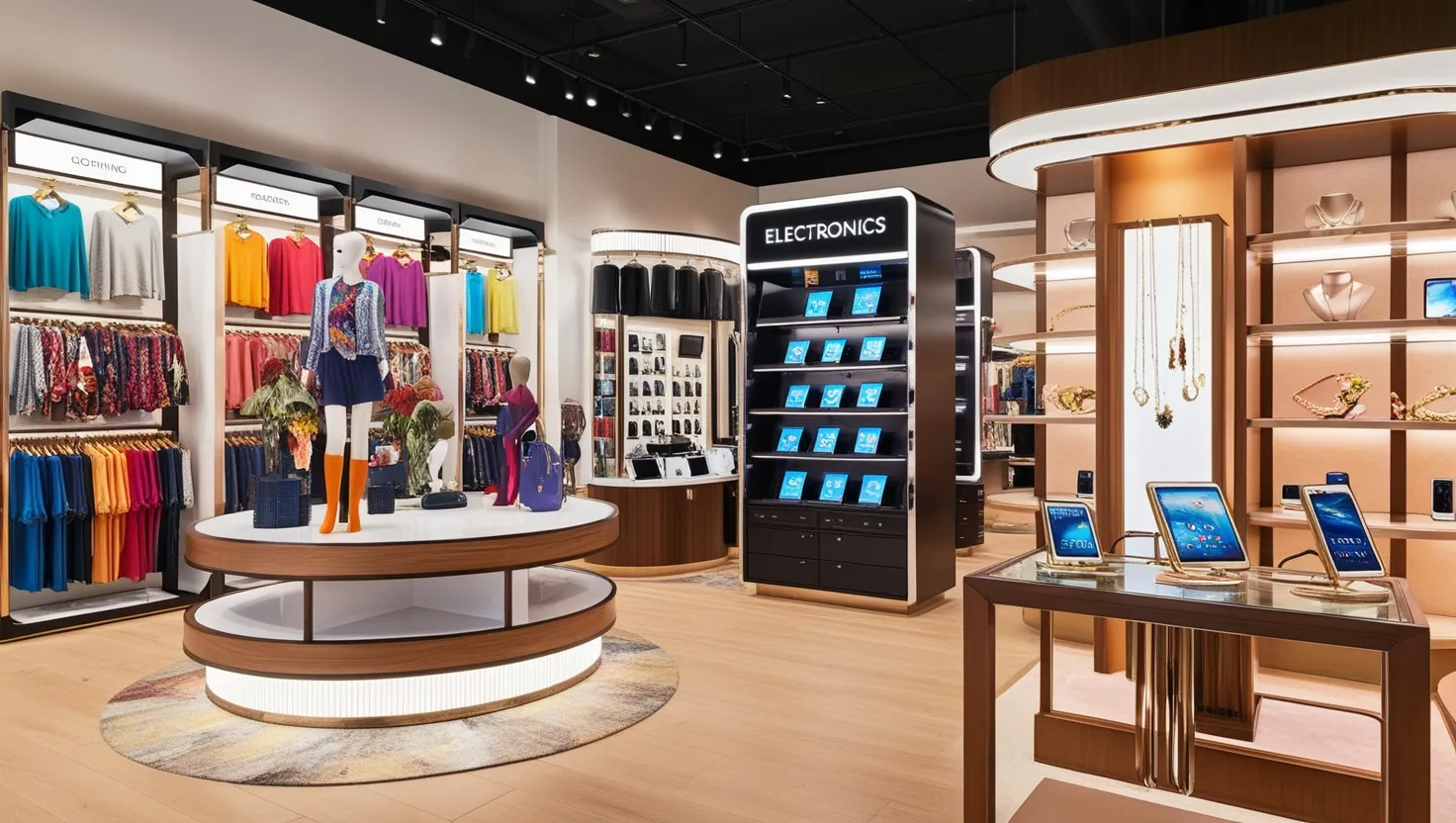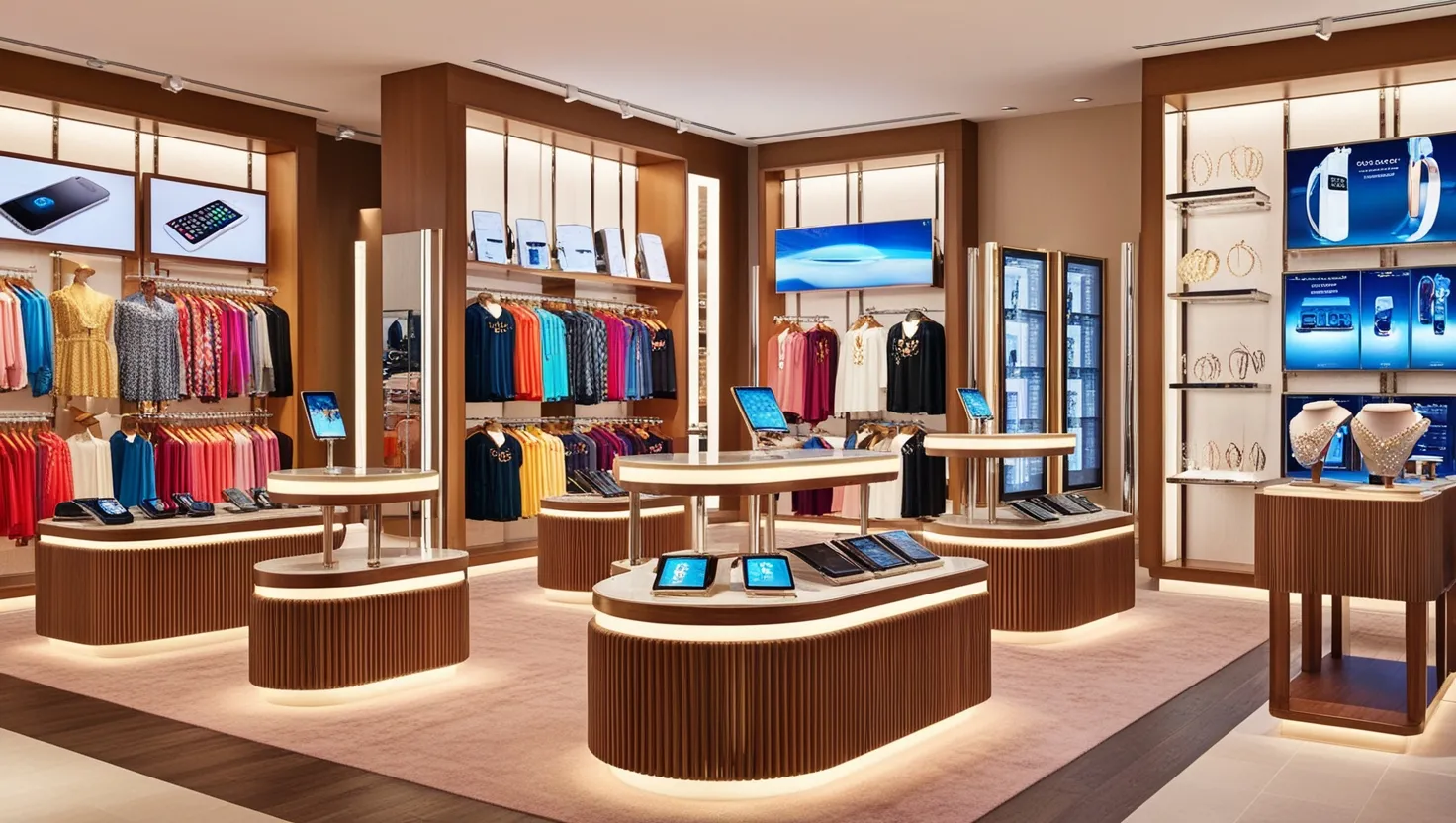Customizing a display rack involves a careful balancing act between functionality, aesthetics, and practical considerations. To create an effective display rack, you need to take into account a range of factors from the specific purpose of the rack to its materials and design features. This comprehensive guide will provide an in-depth analysis of each critical aspect to ensure that your display rack not only meets your needs but also enhances the overall presentation of your products.

1. Purpose and Products
1.1 Suitability for Display Items
The primary goal of customizing a display rack is to ensure that it is well-suited to the items you intend to showcase. Different types of products require tailored solutions to maximize their presentation. Here’s how you can address the needs of various products:
- Clothing: For apparel, racks should feature appropriate hanging mechanisms, such as adjustable rods for different lengths and widths. Consider the use of horizontal rods for hanging garments, and vertical dividers to organize different sizes or types. The depth of the shelves should prevent clothes from wrinkling, and additional features like integrated mirrors or lighting can enhance the shopping experience.
- Electronics: Electronic items such as phones, tablets, or computers may need racks with specialized holders or adjustable shelves to accommodate various sizes. Incorporating cable management solutions and secure compartments for accessories can also enhance the functionality of the rack.
- Jewelry: Jewelry display racks require features such as glass showcases to protect valuable items and small compartments to prevent tangling. Use velvet-lined trays or hooks to highlight individual pieces while maintaining their security.
1.2 Customization for Product Types
Consider the nature of the products when customizing your rack. Products with varying dimensions or those requiring special handling should be accommodated with adjustable features or modular designs. For instance:
- Modular Shelving: Allows for reconfiguration based on product changes. This is useful for seasonal items or rotating stock.
- Specialized Holders: For products like bottles or boxes, specialized holders can prevent tipping and ensure visibility.
2. Space and Dimensions

2.1 Measuring Your Space
To design a display rack that fits perfectly in your environment, accurate measurements are crucial. Here’s how to approach this:
- Height and Width: Measure the total height and width of the space where the rack will be installed. Consider the height of surrounding fixtures and ensure that the rack’s height does not obstruct any sightlines or access areas.
- Depth: Ensure that the depth of the rack allows for adequate display space while still fitting within the designated area. A depth that is too large can cause overcrowding, while a depth that is too small may not accommodate larger items.
2.2 Design Efficiency
Efficient design maximizes the use of available space. Utilize these tips to ensure the rack is both functional and visually appealing:
- Vertical Space Utilization: Make full use of vertical space by incorporating multiple levels or shelves. This helps in showcasing more products without consuming additional floor space.
- Customer Flow: Design the rack to facilitate smooth customer movement around it. Avoid creating bottlenecks or areas where customers may feel cramped.
3. Material Choice
3.1 Durability and Aesthetics
The material used for the display rack impacts both its longevity and visual appeal. Here’s a breakdown of common materials:
- Metal: Provides robustness and a modern look. Metal racks are suitable for high-traffic areas and can handle heavy items. Choose materials like steel or aluminum for durability and consider powder coating for a sleek finish.
- Wood: Offers a warm, classic aesthetic and is ideal for creating a sophisticated look. Hardwood options like oak or walnut are durable but may require regular maintenance to prevent wear and tear.
- Acrylic: Provides a contemporary, minimalistic appearance and is ideal for showcasing products with minimal visual obstruction. Clear acrylic is popular for its sleek look, but it may require frequent cleaning to maintain clarity.
- Glass: Adds a premium feel to the display but needs regular maintenance. Gehärtetes Glas is recommended for safety and durability.
3.2 Ease of Maintenance
Select materials that are easy to clean and maintain. For instance:
- Metal: Wipe clean with a damp cloth; ensure the finish is resistant to scratches and stains.
- Wood: Requires regular dusting and occasional polishing to maintain its appearance.
- Acrylic and Glass: Use glass cleaner and a soft cloth to avoid scratches and smudges.
4. Adjustability
4.1 Modular Components
Incorporating modular components into your display rack allows for flexibility and adaptability. Here’s how:
- Adjustable Shelves: Enable you to modify the height and spacing of shelves to accommodate different products. This feature is particularly useful for seasonal changes or varying product sizes.
- Interchangeable Parts: Modular designs allow for the addition or removal of components based on display needs. This flexibility helps in adapting to new product lines or promotional displays.
4.2 Benefits of Flexibility
- Seasonal Adjustments: Easily reconfigure the rack for seasonal promotions or product changes.
- Future Expansion: Modular components make it easy to expand or redesign the display rack as your needs evolve.

5. Branding
5.1 Visual Identity
Integrating branding into your display rack helps reinforce your store’s identity and enhances brand visibility. Here’s how to effectively incorporate branding:
- Brand Colors: Use your brand’s color palette to paint or finish the rack. This creates a cohesive look that aligns with your store’s visual identity.
- Logos and Signage: Incorporate your logo or brand name into the design. This can be achieved through custom decals, engraved plaques, or branded panels.
5.2 Consistency with Store Theme
Ensure that branding elements are consistent with the overall theme of your store. This alignment creates a unified shopping experience and strengthens brand recognition.
6. Lighting
6.1 Enhancing Product Visibility
Good lighting can significantly impact the visibility and appeal of your products. Consider the following options:
- Built-in Lighting: Integrate LED lights into the display rack to highlight products. LED lighting is energy-efficient and provides clear illumination without excessive heat.
- Spotlighting: Use adjustable spotlights to focus on key items or featured products. This draws attention and creates a visually engaging display.
6.2 Lighting Placement
Strategically position lights to avoid glare and ensure even illumination. Consider the following:
- Avoid Shadows: Ensure that the lighting is positioned to minimize shadows on products, allowing them to be seen clearly.
- Even Coverage: Distribute lighting evenly across the display to prevent dark spots or uneven lighting.
7. Mobility
7.1 Design for Movement
If frequent rearrangement is necessary, consider these mobility features:
- Wheels: Add casters or wheels to the base of the display rack for easy movement. Choose high-quality wheels that can support the weight of the rack and lock in place to prevent movement.
- Lightweight Materials: Opt for materials that are durable yet lightweight to facilitate easy relocation.
7.2 Stability Considerations
Ensure that mobility features do not compromise the stability of the rack. The design should balance ease of movement with secure positioning to prevent accidents or tipping.
8. Weight Capacity
8.1 Load-Bearing Capacity
Ensure that the display rack can safely support the weight of your products. Here’s how:
- Reinforced Structures: Use sturdy materials and construction techniques to handle heavy items. Incorporate reinforced brackets and supports to enhance load-bearing capacity.
- Weight Distribution: Design the rack to evenly distribute weight across its structure to prevent strain and potential damage.
8.2 Safety Testing
Conduct thorough testing to ensure that the rack meets safety standards and can handle the intended load. Regular checks and maintenance are crucial for ensuring continued safety and functionality.
9. Customer Interaction

9.1 Ease of Access
Design the display rack with customer behavior in mind to enhance the shopping experience:
- Visibility: Ensure that products are prominently displayed and easily visible. Avoid placing items in areas where they are obstructed or difficult to see.
- Reachability: Design shelves and display areas to be within easy reach for customers. Consider the average height and accessibility needs of your target audience.
9.2 Customer Experience
Enhance the customer experience by making the display rack intuitive and easy to navigate. This includes:
- Organized Layout: Arrange products in a logical manner that facilitates easy browsing and selection.
- Return to Rack: Ensure that products are easy to return to the rack, promoting a tidy and organized display.
10. Assembly and Maintenance
10.1 Ease of Assembly
Consider how easy it will be to assemble the display rack. Opt for designs that simplify assembly and include clear instructions. Features to consider include:
- Pre-Drilled Holes: Ensure that all components are pre-drilled and aligned for easy assembly.
- Simple Joinery: Use joinery techniques that allow for straightforward assembly without requiring specialized tools.
10.2 Maintenance Considerations
Choose designs and materials that facilitate easy cleaning and maintenance. This includes:
- Removable Shelves: Design shelves that can be easily removed and cleaned.
- Durable Finishes: Use finishes that resist stains and are easy to wipe clean.
Schlussfolgerung
Customizing a display rack involves careful consideration of multiple factors, from the purpose and products to material choice, adjustability, and customer interaction. By addressing each of these aspects in detail, you can design a display rack that not only meets your functional needs but also enhances the visual appeal of your store. An effectively customized display rack contributes to a better shopping experience, supports your brand identity, and ensures that your products are presented in the best possible light.
FAQs
1. How can I determine the best materials for a display rack?
- Choose materials based on the durability required, ease of maintenance, and the visual appeal that aligns with your store’s design. Metal, wood, acrylic, and glass are common options, each offering distinct benefits.
2. What are the advantages of using adjustable components in a display rack?
- Adjustable components allow you to modify the rack’s configuration to accommodate different products, seasonal changes, and evolving inventory, offering flexibility and adaptability.
3. How can I effectively incorporate branding into the display rack design?
- Use your brand’s colors, logos, and signage to create a cohesive look that reinforces brand identity. Ensure these elements are consistent with your store’s overall theme and design.
4. What types of lighting are best for enhancing product visibility on a display rack?
- Built-in LED lighting and adjustable spotlights are effective options for highlighting products and improving visibility. Ensure lighting is strategically placed to avoid glare and provide even illumination.
5. What should I consider for the weight capacity of a display rack?
- Ensure the rack is constructed with reinforced materials and supports to handle the weight of your products. Conduct safety testing to verify that the rack can safely bear the intended load without compromising stability.
